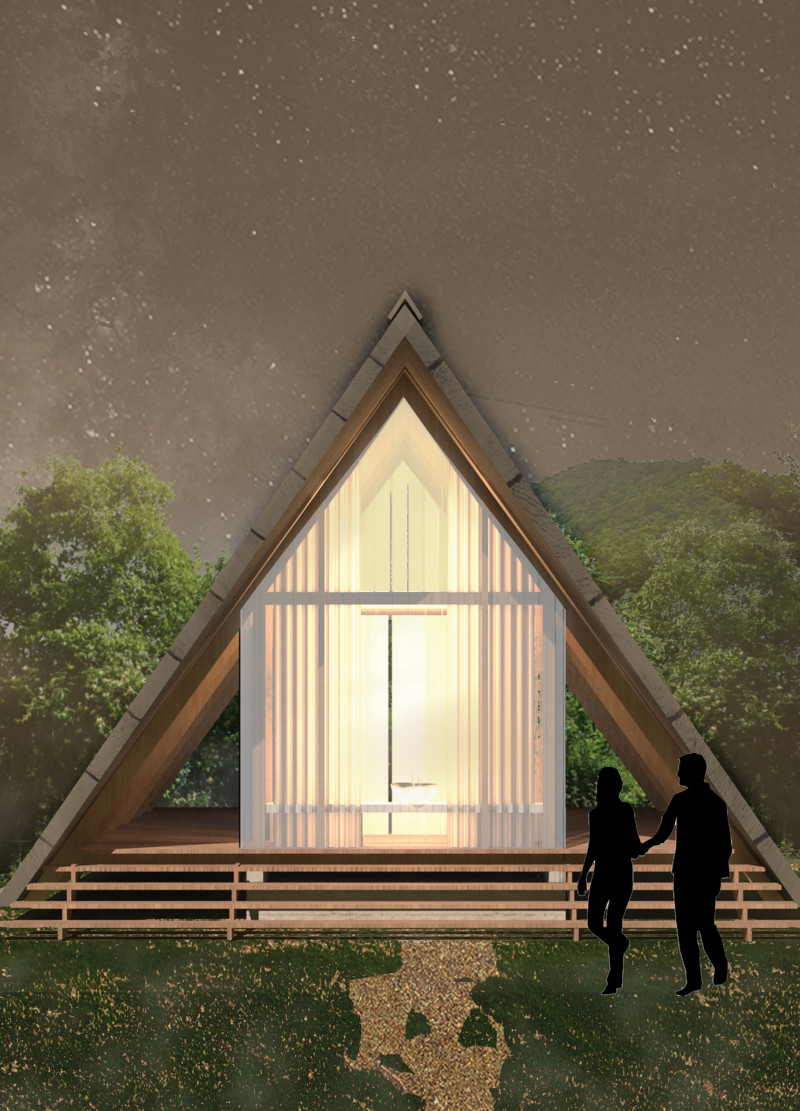5 key facts about this project
Functional aspects of the project center around serene spaces that encourage individual and communal activities. The retreat's layout consists of several A-frame structures, each serving distinct purposes such as living quarters, meditation spaces, and communal gathering areas. This configuration allows for flexible use, catering to various visitor needs while promoting an atmosphere of peace.
Materiality and Craftsmanship
The architectural design employs sustainable and locally sourced materials to minimize environmental impacts. Key materials include reclaimed timber flooring, locally sourced teak wood for durability, and charred timber cladding, which enhances fire resistance and weather durability. Polycarbonate façade panels allow natural light to penetrate while maintaining privacy, and structural timber trusses provide stability without compromising the aesthetic qualities of the retreat.
Another notable feature is the use of a waterproof plywood system, which protects against the humid climate of Cambodia. Glass fiber insulation is incorporated to manage thermal comfort, ensuring a pleasant environment for guests year-round.
Cultural and Environmental Integration
What differentiates the Vine Retreat Wats project from other architectural endeavors is its deep respect for local culture and the environment. The design synthesizes the historical context of Cambodian architecture with modern design ideas, establishing a dialogue between tradition and innovation. The retreat spaces are oriented to harness natural light and prevailing winds, optimizing energy efficiency and creating comfortable living conditions.
The modular configuration permits adaptability across different topographies, making it suitable for varied site conditions while maintaining a cohesive retreat experience. Each unit integrates seamlessly with the landscape, preserving existing flora and providing unobstructed views of the surrounding environment.
Encouragement for Exploration
For further insights into the architectural plans, sections, and designs that underpin this project, readers are encouraged to explore the comprehensive project presentation. Engaging with the architectural ideas that shaped the Vine Retreat Wats will provide a deeper understanding of its unique contributions to contemporary architecture in Cambodia and the broader context of retreat design.


























